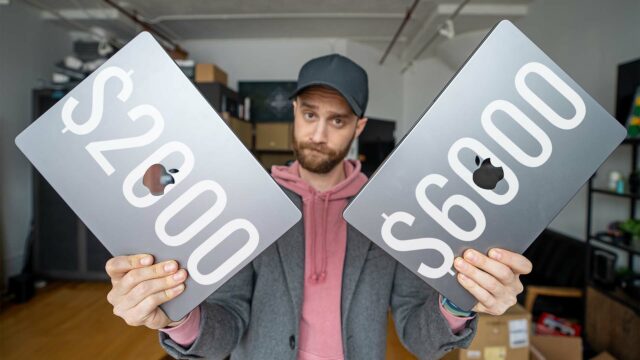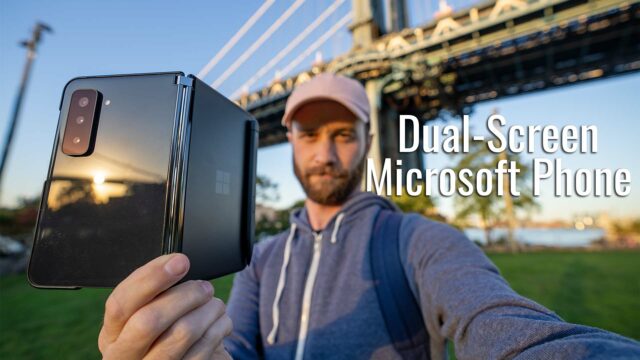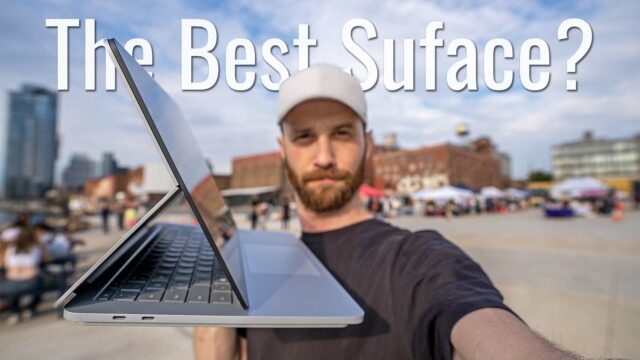Surface Book 2 (COMPLETE WALKTHROUGH) (Video)
I was finally able to get my hands on it, the 15″ top of the line Surface Book 2. I’ve honestly always been a fan of the Surface Book (and frankly Microsoft’s new direction for their hardware) but could never pull the trigger on buying a Book (or any Surface computer really) because they’ve always lacked a powerful enough GPU for me to be able to edit footage on it.
But now, with the Surface Book 2 and the NVIDIA GTX 1060 inside the higher end 15″ model, I can finally give it a try. So here is my complete walkthrough of the Surface Book 2. If you aren’t familiar, this series of complete walkthroughs I do is basically me showing you every single feature I can on a new piece of tech so you are fully prepared to know what it can and cannot do in case you’re looking to buy one. Here goes.
Hardware
First, we start with the hardware.
It’s made out of this magnesium that is lightweight and resembles metal, even if, when you tap it, it feels kinda like plastic. Regardless it’s minimalistic and looks pretty good, in my opinion. But what makes it so unique on the market, is the fact that it has a screen that houses the CPU and a base that houses the GPU and an extra battery that can be disconnected by pushing a button–turning the screen into a large tablet.
It can even be reconnected backward to the base for some other form factors. I’ve particularly found that using the pen (sold separately for $99) when it’s connected in this reverse format and is laid flat allows me to use things like Lightroom to edit photos but still utilize the GPU in the base for added performance.
The screen itself is a 15″ 3:2 aspect ratio touchscreen with a 3240×2160 resolution on this model, but there is also a 13.5″ version that has a 3200×2000 resolution.
If you go for the 15″ model you get a set processor, RAM, and GPU. Namely the Intel 8th Gen i7-8650U quad-core, 16GBs of 1866mhz DDR3 RAM, and the NVIDIA GeForce GTX 1060. The 13.5″ model, on the other hand, has a choice between the 7th gen Intel i5 7300U or the same 8th Gen i7-8650U for the processor, 8 or 16GBs of RAM, Intel HD 620 GPU (on the i5 model) or the NVIDIA GTX 1050 GPU on the i7 models.
Both have SSD storage options of either 256GB, 512GB, or 1TB.
As far as ports go, we have two USB 3.1 Gen 1 ports and an SD card slot on one side and the magnetic proprietary power port and a USB 3.1 Gen 1 Type C port with USB Power Delivery. We also have a 3.5mm headphone jack in the odd placement of at the top right of the screen.
For cameras, we have a 5MP 1080P front-facing camera and an 8MP 1080P rear-facing camera.
Under the screen, we have Dolby stereo speakers hidden in the grill as well as dual microphones.
Tests
Software-wise it’s running Windows 10 so that’s going to be your normal affair there. What I want to see now though is how it stacks up against my current laptop, the last previous model of the Razer Blade laptop with the 7th gen Intel i7 processor, 16GBs of RAM, and the same NVIDIA GTX 1060.
As I mentioned, I edit videos on my laptop so the new GPU was a huge draw for me with this new laptop so, first up, let’s see how it does rendering the same footage out at the YouTube 4K preset compared to the Blade.
Now, that was surprising because technically on paper the Surface Book 2 should have the same GPU, same RAM, but better processor and yet it’s about 25% slower than the Blade at rendering. When I asked Microsoft’s reps about this they told me it has to do with the CPU voltage being lower to increase battery life (this is even if I put the computer on Best Performance by the way, if I left it at recommended it would have taken longer).
Speaking of battery life though. Side by side see how they both do on battery playing a YouTube video until they die.
Price
And finally, the price starts at $1499 for the i5 13.5″ model and goes up to $3299 for the 1TB, 15″ i7 model which I have here. Putting it on par at least with gaming laptops with similar specs like the Blade.
Now, with these complete walkthroughs, I usually leave my opinions out as much as I can so you can just see what’s what without them, but I have to just say that I’ve loved using this laptop for the past couple of weeks and even if the render times are 25% slower which was disappointing at first, the fact that it’s the same price as my Blade, lasts way longer so when I’m out editing at a cafe or somewhere I don’t have to worry about it just dying immediately, and then has the added benefits of the different form factors and the pen, etc. Makes me keep taking it out instead of the Blade. Actually, I really don’t want to give it back to Microsoft…
Thanks for reading guys, let me know what you think in the comments below and don’t forget to follow me on social for more walkthroughs, tips & tricks, and other tech stuff.
















